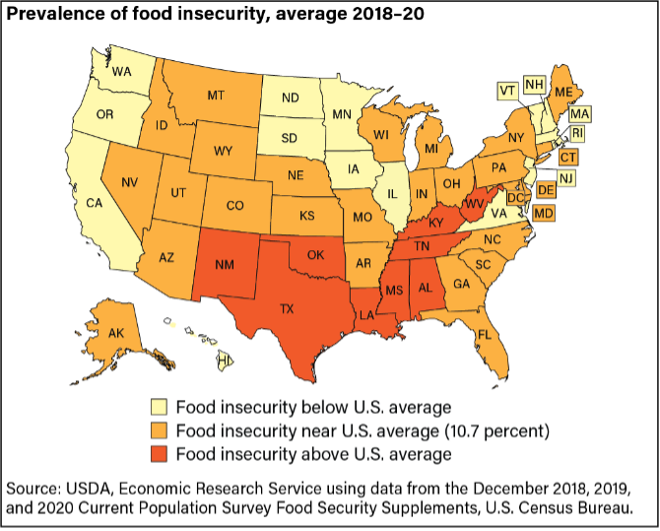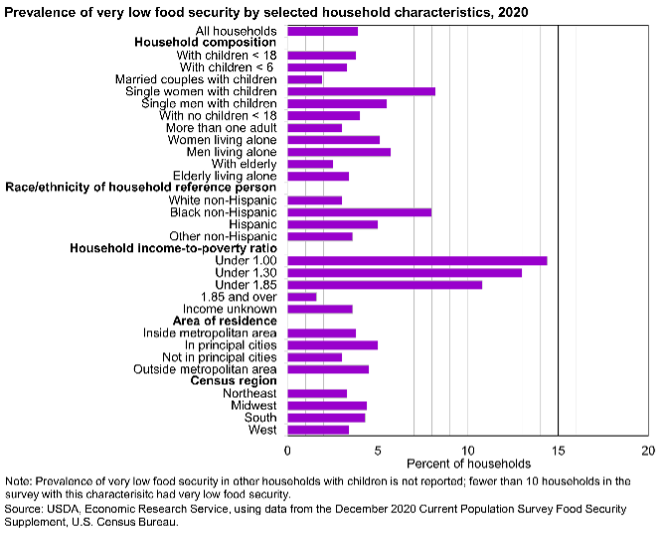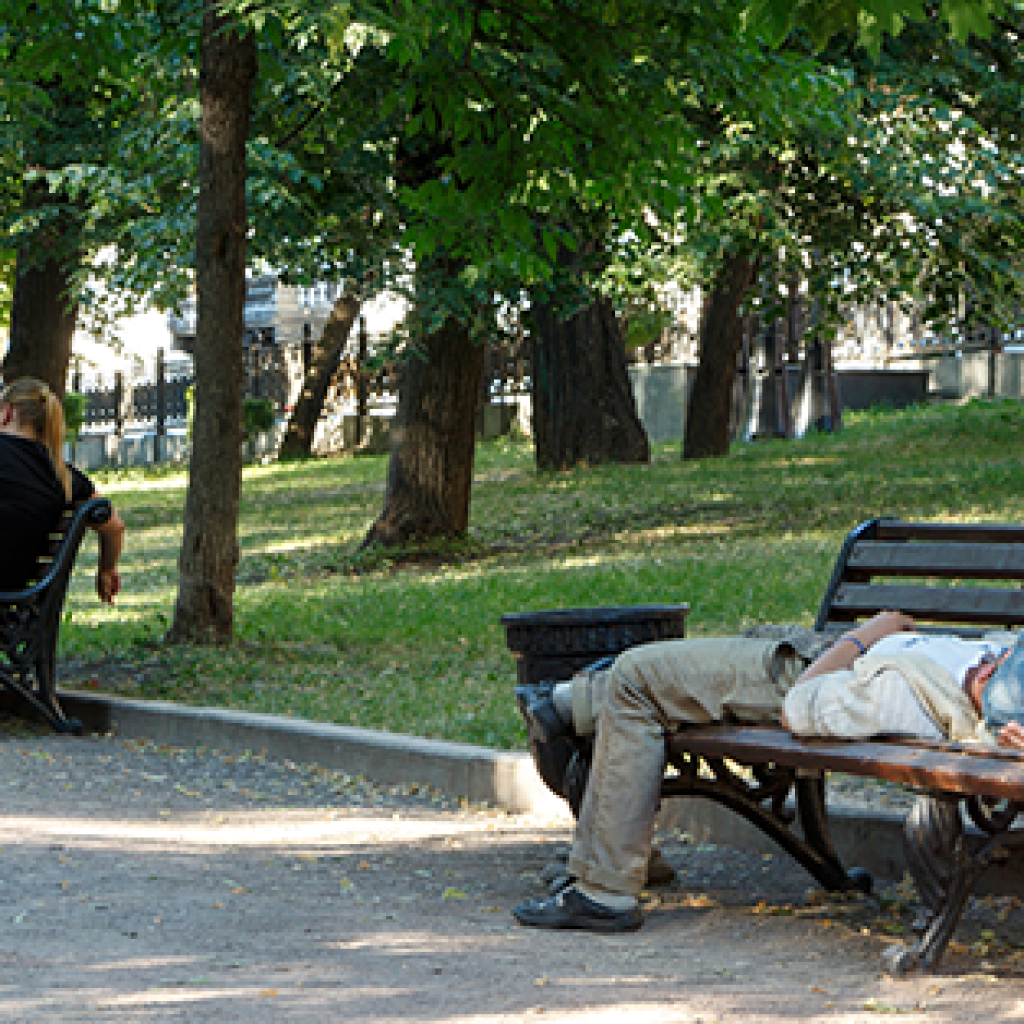What the Research Says About the Impact of Hunger and Homelessness on SUD, OUD, and SMI
Editor’s Note: This post was originally published in February 2021 and has been updated to reflect current trainings.
https://casatondemand.org/2024/01/18/exploring-the-interplay-of-social-determinants-a-deeper-dive-into-hunger-homelessness-and-behavioral-health
What the Research Says About the Impact of Hunger and Homelessness on SUD, OUD, and SMI
Background
Substance Use Disorder (SUD), Opioid Use Disorder (OUD), and Serious Mental Illness (SMI) are highly impacted by Social Determinants of Health as described in the Catalyst blog posts Read more about the impact of the Social Determinants of Health in our archived Catalyst blog posts “A Blueprint for Action: Addressing the Social Determinants of Health – Highlights From the 2021 Southern Nevada Substance Misuse and Overdose Prevention Summit”, “Recovery in Special Emphasis Populations: Leveling the Playing Field” and “Important Facts About Native American Heritage Month”. While the full impact of the various elements of the Social Determinants of Health has not been quantified and all of the potential solutions have not yet been discovered, two elements are highlighted here in observance of Hunger & Homelessness Awareness Week, November 13-21, 2021.
Research is beginning to inform the knowledge base so that effective responses for behavioral health providers on the front lines may be refined as they work to address the problem. One recent study examined food insecurity trajectories of homeless adults who participated in a housing intervention trial. Researchers wanted to find out if people receiving the intervention and having specific mental and substance disorders had predictable food insecurity trajectories. They identified four food insecurity trajectories: persistently high food insecurity, increasing food insecurity, decreasing food insecurity, and consistently low food insecurity. The participants in the study had at least one alcohol or other substance use disorder and at least one non-substance related mental disorder of the following: major depressive episode, mood disorder with psychotic features, substance disorder, and co-occurring disorder. The study found that of the four food trajectory alternatives, homeless participants with major depressive episode, mood disorder with psychotic features, substance disorder, or having co-occurring SUD or AUD and a non-substance-related mental disorder was highly associated with membership in the persistent food insecurity trajectory group (Lachaud et al., 2020). This important research confirms that simply providing housing is not enough to address the issue of homelessness and hunger and that more comprehensive programs, services, and resources are needed that combine mental health services with meeting the basic needs for food and housing security.
The Overall Scale of Hunger and Homelessness in the United States
According to the Hunger & Homelessness Awareness Week website, the facts are that in the U.S.:
- 2 Million American live below the poverty level
- 580,000 Americans are normless on any given night
- 44 million Americans risk suffering from hunger
- 1 in 6 American children live in poverty
These data do not reflect the living situations of only adults. Families with children are also included in those numbers. In fact almost 30% of homeless people are living in families with children as cited by the National Alliance to End Homelessness, and unaccompanied youth under age 25 comprise 6% of the general homeless population. The National Center on Family Homelessness estimates that 1 in 45 children – 1.6 million – experience homelessness each year in the U.S. During the 2011-2012 school year there were approximately 1,168,354 students who experienced homelessness and that the number represented a 10% increase from the year before and a 24% increase over a three year period (Education for Homeless Children and Youths Program Data Collection Summary – 2012 (PDF | 974 KB).
Certain populations are more at risk of homelessness than the general population in the U.S., with risk for homelessness significantly associated with gender, race, and ethnicity, with men and people of color being disproportionately affected compared to women and white people. Homelessness has been reduced drastically among some groups, such as military veterans. With a goal that aimed for systems ensuring that homelessness among veterans is rare, brief, and a single occurrence, rates of veteran homelessness have decreased by 39% since 2007 (National Alliance to End Homelessness). That reduction is unique to the veteran homeless population, and veterans represent just 6% of those people experiencing homelessness.
Nevada had the 9th largest estimated rate of homelessness in the United States in 2020, with 23.3 homeless people per 10, 000 and the national average being 17 homeless people per 10,000 (Porch Research, 2021). Of those reported as homeless in the U.S. Housing and Urban Development (HUD) data, 53.1% were living unsheltered and 10.% were considered chronically homeless.
The U.S. Department of Agriculture (USDA) Economic Research Service reports that 10.5 percent (13.8 million) U.S. households were food insecure at some point during 2020. This means they were “uncertain of having, or unable to acquire, enough food to meet the needs of all their members” due to insufficient money or other resources for food as illustrated in the map below (Household Food Security in the United States in 2020).

The food insecurity data in Nevada is 12.7% which is near the national average of 10.7 percent (R.W. Johnson State of Childhood Obesity, 2021) . The characteristics of households with higher rates of food insecurity included those children and headed by a single woman, Women or men living alone, Black non-Hispanic and Hispanic households, households with an income-to-poverty level of 1.85 and lower, and household in principal cities of metropolitan areas and in nonmetropolitan areas as shown in the chart below (USDA, 2022).

Impact of Hunger and Homelessness
With so many people of all ages, races and ethnicities in the U.S. living with food and housing insecurity, the impact is significant, especially when they are viewed as two of the Social Determinants of Health, the others being Economic Stability, Education, Community and Social Context, and Health Care System.
Some of the more direct impacts of hunger and homelessness include:
- Impacts on health – Chronic diseases such as diabetes and high blood pressure are obvious consequences of a poor or inadequate diet, but others such as kidney disease, eye disease, heart disease, and obesity are not as obvious. People with food insecurity can also have more psychological and behavioral health issues and children may have school problems or struggle in social situations. Lack of access to appropriate food disproportionally affects the physical and mental health of young children, sometimes delaying development. Research shows that chronic illnesses like asthma and anemia and problems such as hyperactivity, anxiety, and aggression in young children are linked to food insecurity (Feeding America, 2021). The health impacts go even further, singling out those with Substance/Opioid Use Disorder (SUD/OUD) in the following ways:
- People with substandard living conditions or who live in counties with very low levels of social capital have been shown by research to have the highest overdose rates. Substance use and poverty are reinforced by untreated mental health disorder and a shortage of stable housing and are correlated with OUD in underserved communities (Opioid Response Network, 2021).
- People with SUD/OUD and insecure housing and food have unique barriers to prevention due to lack of protective factors such as lack of access to primary care and the stressful environment created by poverty.
- People with SUD/OUD have barriers to appropriate care, engagement, and retention in treatment that can include lack of access to evidence-based care from either lack of availability or lack of transportation, lack of providers qualified to administer medication for SUD or OUD, fear or mistrust of the medical system due to prejudice or stigma during previous encounters, or lack of insurance or coverage for treatment (Opioid Response Network, 2021).
- People in recovery from SUD and OUD may not receive proper screening and testing or support for recovery due to either being homeless or not having safe shelter or living conditions. People in recovery also frequently have co-occurring disorders and prioritize food and shelter needs above higher level needs (Opioid Response Network, 2021).
While the need for addressing the social determinants of health to correct health disparities in this country is obvious, the task can seem overwhelming. Awareness weeks such as this week’s Hunger & Homelessness Awareness Week can help highlight one or two issues by bringing them to the attention of everyone. Health and behavioral healthcare providers can focus on participation in the event for one week, while investigating ways of working to end hunger and homelessness within the systems and structures in which they work, one element at a time. To assist with this effort, many resources and links are provided for easy access below, although the list is not complete.
Your Turn: Have you had experience in handling homeless or hungry clients? What are your favorite resources? Do you have any advice for other providers hoping to make life easier for these clients? Please share in the comments below.
Resources
Nevada Specific Resources:
- Hunger & Homelessness Awareness Week, November 13-21, 2021.
- Food Bank of Northern Nevada – 1 in every 9 Nevadans facing hunger every day, people you see every day are fighting this fight.
- Food for Thought – dedicated to helping hungry children in our community by providing food, as well as solutions, resources and increased awareness, to combat hunger.
- Las Vegas Rescue Mission – We work around the clock to assist those who need the most help in our community.
- Catholic Charities of Southern Nevada – We give help and hope to more than 4,200 vulnerable men, women and children each day, regardless of religion, in southern Nevada by feeding, sheltering and transforming lives.
- CASAT OnDemand: Now you can find the information you need and access it instantly any time of the day or night – any time you have the time.
- Catalyst Blog – is the simple solution to your behavioral health information needs. We sort through the most recent material for you, and re-purpose, revise, or transform it into byte sized, easily digested information morsels so you can make sense of it all. If we can’t find it, we will create it.
- CASAT Conversations – is a resource for exploring behavioral health topics. These topics explore the complex connection between how our environment, behaviors and actions impact our health and wellbeing. With a wide-range of timely topics, CASAT Conversations is geared towards having meaningful conversations with people sharing their capacity for personal growth and change, along with expert educational insights.
- Season 1: Behind the Frontline: Supporting the Families of Frontline Staff and First Responders
- Season 2: Exploring the Importance of Resilience in Healthcare
- Season 3: Coming soon! Season 3 will cover the timely topic of “health disparities”
-
- Resources & Downloads – Resources and links on a variety of behavioral health topics
- Learning Labs – collections of curated references for each behavioral health topic to help increase subject literacy, knowledge, skills, and overall competence in providing high-quality, cutting-edge services.
- Community – a Calendar for trainings and other events, a Job Board, and Northern Nevada Behavioral Health Coalition (NNBHC) monthly meeting notes and announcements
- Feeding America – What hunger looks like in Nevada
- Opioid Response Network – Supporting substance use disorder treatment, prevention and recovery sectors during the COVID-19 public health crisis: COVID-19 Public Health Update with many resources
- Brandeis Opioid Resource Connector – How Social Determinants of Health Create Differential Impacts
- Addiction Technology Transfer Center Network (ATTC) – Emerging Issues Around COVID-19 and Social Determinants of Health for the Substance Use Prevention, Treatment, and Recovery Workforces
- Substance Abuse and Mental Health Services Administration (SAMHSA):
- Homelessness Programs and Resources
- From Food Insecurity to a Full Plate
- Homeless Experiences of Parents Have a Lasting Impact on Children
- Behavioral Health Equity
- SAMHSA Advisory – Behavioral Health Services for People Who Are Homeless
- S. Department of Agriculture Economic Research Service:
- Key Statistics & Graphics on Food Security in the U.S.
- Food & Nutrition Assistance
- The National Alliance to End Homelessness – a nonpartisan organization committed to preventing and ending homelessness in the United States.
References
Mental and substance use disorders and food insecurity among homeless adults participating in the At Home/Chez Soi study Lachaud J, Mejia-Lancheros C, Wang R, Wiens K, Nisenbaum R, et al. (2020) Mental and substance use disorders and food insecurity among homeless adults participating in the At Home/Chez Soi study. PLOS ONE 15(4): e0232001. https://doi.org/10.1371/journal.pone.0232001
Opioid Response Network/SAMHSA. (2021). Brandeis Opioid Resource Connector. The Opioid Epidemic and COVID-19: How Social Determinants of Health Create Differential Impacts Brandeis Opioid Resource Connector. Retrieved November 18, 2021, from https://opioid-resource-connector.org/resources/opioid-epidemic-and-covid-19-how-social-determinants-of-health-create-differential.
This article was developed by Stephanie Asteriadis Pyle, PhD at CASAT. Feel free to use, link to, or distribute this information. A link to our site and attribution would be much appreciated. Suggested citation:
Asteriadis Pyle, S. (2021, November 18). What the research says about the impact of hunger and homelessness on sud, oud, and SMI. CASAT OnDemand. Retrieved November 23, 2021, from https://casatondemand.org/2021/11/18/what-the-research-says-about-the-impact-of-hunger-and-homelessness-on-sud-oud-and-smi/.
Blog Post Tags:
Related Blog Posts
Related Learning Labs
Related Resources
.
- Buscar Tratamiento de Calidad para Trastornos de uso de Sustancia (Finding Quality Treatment for Substance Use Disorders Spanish Version)
- Finding Quality Treatment for Substance Use Disorders
- Focus On Prevention: Strategies and Programs to Prevent Substance Use
- Monthly Variation in Substance Use Initiation Among Full-Time College Students
- The National Survey on Drug Use and Health (NSDUH) Report: Monthly Variation in Substance Use Initiation Among Adolescents









